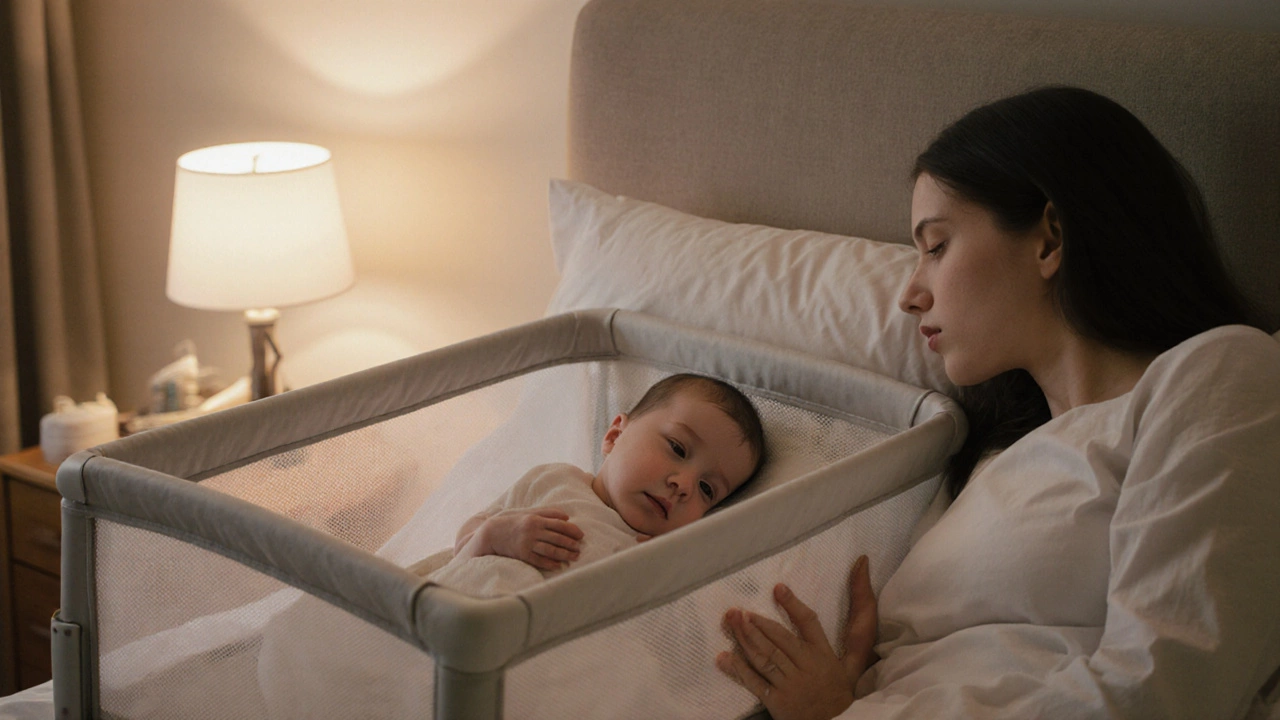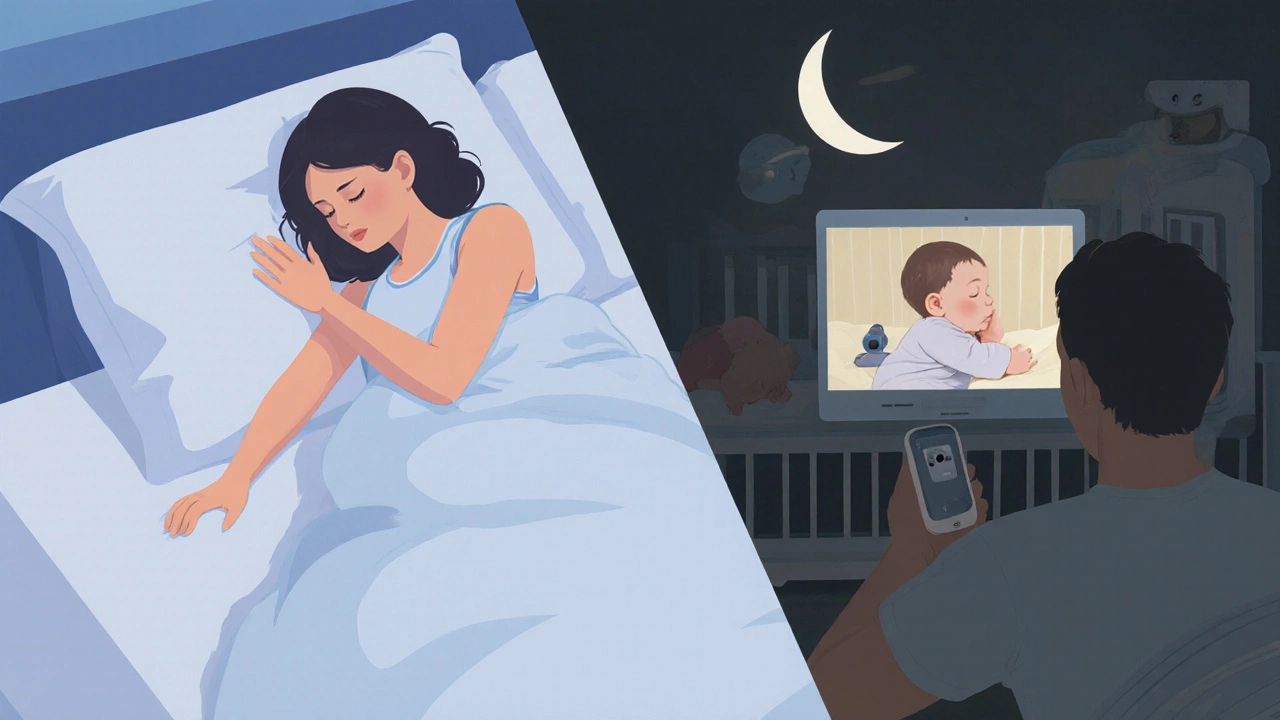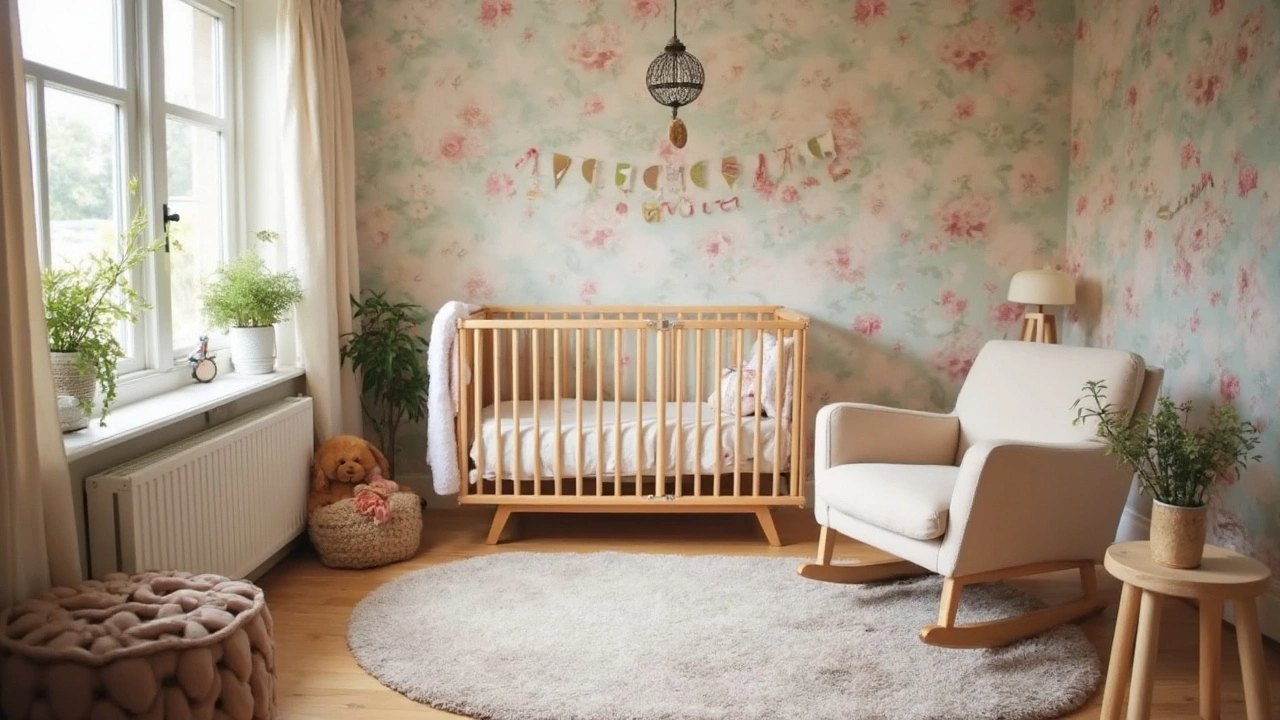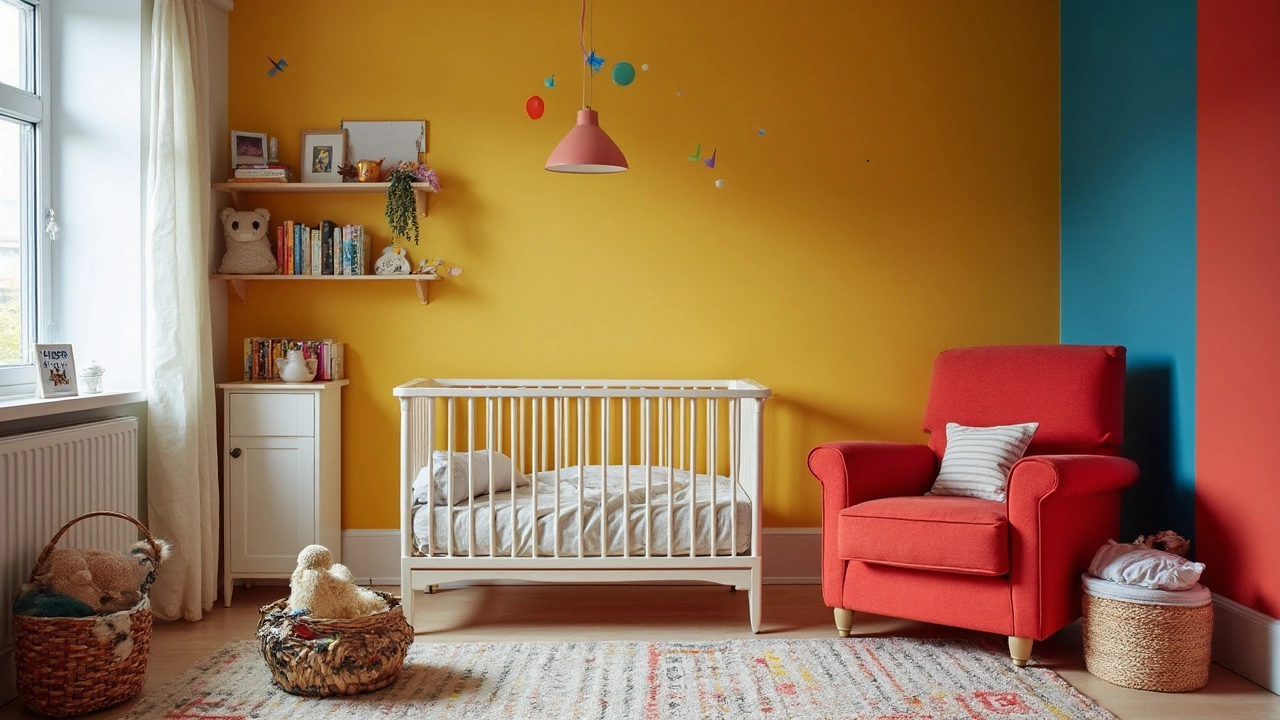Should Babies Sleep in the Bedroom or Nursery? What Experts Recommend in 2025

Nursery Safety Checklist
Baby Safety Assessment
Every new parent faces the same quiet question at 2 a.m.: should my baby sleep in the bedroom or the nursery? It’s not just about space or style-it’s about safety, sleep quality, and your own sanity. The answer isn’t as simple as ‘follow the rules’ because rules change, and babies don’t care about them. What matters is what works for your family right now.
Why the Bedroom Is the Default Recommendation
The American Academy of Pediatrics (AAP) has been clear since 2011: babies should sleep in the same room as their parents-but not in the same bed-for at least the first six months, ideally up to one year. This isn’t just a suggestion. It’s backed by data. Studies show room-sharing reduces the risk of SIDS by up to 50%. Why? Because parents are more likely to notice subtle changes in breathing, movement, or sound when the baby is nearby.
You don’t need a fancy crib in a separate room for this. A bassinet or a bedside sleeper placed right next to your bed works just as well. Many parents in Vancouver, like me, use a co-sleeper that attaches to the bed. It keeps the baby close without the risks of bed-sharing. You can reach down and soothe them without getting out of bed. That’s a game-changer when you’re sleep-deprived.
Room-sharing also makes nighttime feedings easier. Breastfeeding moms, especially, benefit from not having to walk across the house in the dark. Formula-fed babies aren’t left behind-getting up to prepare a bottle is faster when you’re already in the same room.
When the Nursery Makes Sense
Not every family can-or wants to-keep the baby in the bedroom. Some homes are small. Others have loud snorers, shift workers, or pets that make co-sleeping impractical. That’s okay. The AAP’s guidance is about proximity, not punishment.
If you choose a nursery, make sure it’s within earshot. A good baby monitor isn’t optional-it’s essential. Look for one with a clear audio feed, motion detection, and low-latency video. Avoid old-school audio-only monitors. They can miss subtle signs of distress.
Also, don’t assume a nursery means a full-sized crib right away. Many parents start with a mini crib or a bassinet in the nursery. It’s easier to move around, fits better in smaller rooms, and gives the baby a cozy, contained space. The key is keeping the sleep environment simple: firm mattress, no pillows, no blankets, no stuffed animals. That’s true whether the crib is in your room or across the hall.
What About Sleep Quality for Parents?
Let’s be honest: the real reason some parents push for a nursery is sleep. And they’re not wrong. Studies from the University of Toronto show that parents who share a room with their baby get about 40 minutes less sleep per night on average than those who have the baby in a separate room. That adds up to nearly five hours a week. For new parents, that’s the difference between functioning and falling apart.
But here’s the catch: those extra 40 minutes don’t always mean better rest. If you’re constantly checking the monitor, pacing the hallway, or worrying about whether the baby is breathing, you’re not really sleeping. Room-sharing doesn’t guarantee perfect sleep-but it often reduces anxiety, which helps you fall back asleep faster.
Try this: if you’re considering moving the baby to the nursery, test it first. For one week, keep the crib in your room. Then, for another week, move it to the nursery. Track how often you get up, how rested you feel, and how calm your baby seems. You’ll learn more from your own experience than from any article.

The Role of Nursery Furniture
Nursery furniture isn’t just decoration. It’s part of your baby’s safety system. A sturdy crib with slats no more than 2 3/8 inches apart? That’s non-negotiable. A mattress that fits snugly with no gaps? Critical. A changing table that’s anchored to the wall? Smart.
Many parents buy a full nursery set-crib, dresser, rocking chair-before the baby arrives. But you don’t need all of it. A dresser doubles as a changing station with a removable pad. A rocking chair can live in the living room. Focus on what you’ll use daily. The crib is the only piece that needs to meet strict safety standards. Everything else is convenience.
Also, avoid buying secondhand cribs unless you know their history. Older models might have drop-side rails (banned since 2011) or lead paint. Even if it looks fine, it might not be safe. Buy new or certified refurbished from a trusted brand like Graco, Babyletto, or IKEA’s SNIGLAR line.
When to Move the Baby to the Nursery
There’s no magic age. Some families move the baby at 3 months. Others wait until 9 or 10. It depends on sleep patterns, your confidence, and your home setup.
Signs you’re ready:
- Your baby sleeps for stretches of 5-6 hours at night
- You feel confident handling nighttime wake-ups without panic
- The baby doesn’t startle easily or wake up from small noises
- You’ve weaned off the need to constantly check on them
Don’t rush it because you think you should. Babies don’t care about milestones. They care about feeling safe. If they wake up more often in the nursery, go back to the bedroom. There’s no shame in adjusting.

Common Mistakes to Avoid
Here’s what goes wrong more often than you’d think:
- Putting the baby to sleep in a car seat or swing overnight. These aren’t safe sleep surfaces.
- Using a sleep positioner or wedge. The AAP warns against these-they can cause suffocation.
- Overheating the room. Keep it between 68-72°F (20-22°C). A onesie and a sleep sack are enough.
- Waiting too long to transition. If your baby is 12 months old and still in a bassinet, it’s time for a crib. Small spaces become hazards as babies start rolling, sitting, and pulling up.
And please, don’t let Pinterest pressure you. That $800 hand-painted crib with matching mobile? It’s not safer than a $200 basic one. Safety comes from structure, not style.
Final Thoughts: It’s About Balance
There’s no single right answer. The best place for your baby to sleep is the place where everyone gets the most rest and feels the safest. For some, that’s a bassinet beside the bed. For others, it’s a quiet nursery down the hall.
What matters most is consistency. Once you choose a spot, stick with it. Babies thrive on routine. Don’t switch back and forth unless you have to. And remember: this phase doesn’t last forever. Before you know it, your baby will be climbing out of the crib, and you’ll miss those quiet nighttime feedings.
Trust your instincts. Watch your baby. Listen to your body. And if you’re unsure, talk to your pediatrician. They’ve seen hundreds of families in your exact situation.
Is it safe for a baby to sleep in the same room as parents?
Yes, it’s not only safe but recommended. The American Academy of Pediatrics advises room-sharing-baby sleeps in their own crib or bassinet in the parents’ room-for at least the first six months, and ideally up to one year. This reduces the risk of SIDS by up to 50% because parents can respond quickly to signs of distress, feeding needs, or breathing changes.
Can I use a crib from my older child in the nursery?
Only if it meets current safety standards. Cribs made before 2011 may have drop-side rails, which were banned due to strangulation and suffocation risks. Check the CPSC recall list. Even if it looks fine, older cribs might have worn hardware, loose slats, or lead paint. If you’re unsure, buy a new one or choose a certified refurbished model from a trusted brand like Graco or Babyletto.
What’s the best type of bassinet for room-sharing?
Look for a bassinet with a firm, flat mattress that fits snugly, no gaps, and no soft bedding. Side-sleeper models that attach to your bed (like the Arm’s Reach Co-Sleeper) are popular because they let you reach your baby without getting up. Make sure it’s JPMA-certified and meets ASTM safety standards. Avoid bassinets with rocking bases unless they lock securely.
Should I use a baby monitor if the baby sleeps in the nursery?
Yes, especially if the nursery is far from your bedroom. A video monitor with clear audio and motion detection is ideal. It lets you see if your baby is breathing normally, adjusting position, or crying softly. Avoid audio-only monitors-they can’t detect subtle movements. Look for ones with low latency, night vision, and temperature alerts. Brands like Nanit and Eufy offer reliable options.
When should I move my baby from the bassinet to the crib?
Move your baby to a crib when they start pushing up on their hands and knees, rolling over, or reach 15-20 pounds-whichever comes first. Most bassinets are designed for babies under 6 months. Once your baby can move around, a bassinet becomes a safety risk. A crib with fixed sides and a firm mattress is the next safe step.
Can I put a blanket or stuffed animal in the crib?
No. The AAP strictly advises against blankets, pillows, bumpers, or stuffed animals in the crib until the baby is at least 12 months old. These items increase the risk of suffocation and SIDS. Instead, use a wearable blanket or sleep sack. It keeps your baby warm without the danger. Even a light lovey should wait until after the first birthday.

